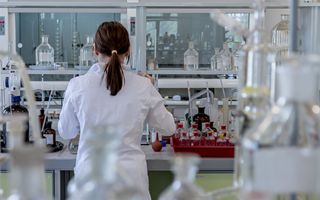(Finance) – Care oncological increasingly effective, reliable and personalized thanks to new smart and compact devices capable of precisely measuring the radiation dose to be used in thehadrontherapy for the treatment of tumors, which specifically destroys the tumor mass while preserving healthy tissues. This is what emerges from a study carried out by a team of researchers fromAENEAS and of National Center for Oncological Hadrontherapy (CNAO), published in the journal Radiation Measurements. Furthermore, ENEA has designed and created a prototype of a compact optical sensor capable of ‘reading’ the information on the stored dose, even several times and without erasing it, so as to be able to repeat and compare the results of different laboratories with different measurement systems.
Specifically, it study proves that i solid state radiation detectors based on lithium fluoride (LiF), a material sensitive to ionizing radiation (X-rays, gamma, electrons, protons, ions), can be used effectively in dosimetry clinic for the treatment of tumors. The results were obtained by exploiting a light emission phenomenon, known as radiophotoluminescence, characteristic of electronic defects, called color centers, which form in LiF when ionizing radiation passes through it. The innovation achieved within the project TECHEA consists of the technique of measuring the dose of ionizing radiation using a blue laser source that ‘excites’ radiophotoluminescence, appropriately collected with a phototube and amplified with electronic techniques[3] developed by the ENEA Physical Technologies and Safety Division.
The LiF is equivalent to tissue human in its interaction with radiation and has other interesting characteristics such as manageability, compactness and insensitivity to ambient light, which allow the radiation dose measurement procedures required of the medical physicist to be simplified and made more reliable. Furthermore, this type of detectors is reusable, does not require electrical power and can be used both in phantoms and for patient monitoring.
The study of characterization dosimetric of the detectors was carried out in a treatment room at the CNAO Foundation, by irradiating the samples with clinical beams of high energy protons produced by the CNAO synchrotron and subjected daily to strict quality controls by the medical physics team of the Foundation itself.
“The multidisciplinarity of this research in which photonics, spectroscopy, ionizing radiation and materials science are confronted with the needs of medical physics to face the challenge of clinical dosimetry in hadrontherapy, requires that the rapid progress obtained so far be further developed, taking advantage of ‘use of the most advanced technologies, in the patient’s interest and for the benefit of health”, they explain Maximum Little onesENEA researcher at the Micro and nanostructures for photonics Laboratory, e Maria Aurora Vincentimanager of the same laboratory.
“This study represents a virtuous example of synergy between a prestigious research body, such as ENEA, and an equally excellent center for the treatment of cancer patients using hadrontherapy (protons and carbon ions), such as CNAO, which for over has been engaged in research and technological innovation for ten years, for increasingly effective and precise treatments”, he declared Mario Lock, medical physicist, head of the Medical Physics Unit of the CNAO Foundation of Pavia.
